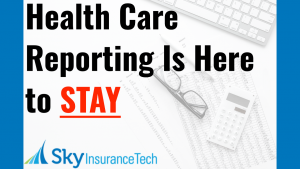Just like most things Affordable Care Act (ACA) related, there is a significant amount of confusion about how the ACA reporting extension works. Hopefully this article will help …
The first thing you need to know is that there are actually TWO DIFFERENT extensions employers need to know about.
- First, you can receive an extension by sending the required ACA reporting to the IRS
- Secondly, there is a completely separate process to request an extension regarding providing the forms to your employees
1). As an Applicable Large Employer (ALE), employers must file the appropriate forms 1094 and 1095 with the IRS. Should you need additional time submitting the data to the IRS by the March 31st e-filing deadline, you can receive an automatic 30-day extension by completing Form 8809. More information here…
2). The form 8809 does not apply to providing forms to employees however. To ‘possibly’ receive any extension in providing the appropriate forms 1095 to your employees, and employer must send a letter to the IRS requesting an extension (full instructions on how at the bottom of this article).
Finally, many are relying upon the ‘Good Faith Effort’ provision that the IRS has issued in regard to their 2015 ACA form filings. However, it is important to know that this provision does not apply to timely providing forms to recipients or the IRS. For employers who do not provide timely notices to the IRS or recipients, they will face the penalties prescribed by the law.
Instructions on Extensions of time to furnish statement to recipients. You may request an extension of time to furnish the statements to recipients by sending a letter to Internal Revenue Service, Information Returns Branch, Attn: Extension of Time Coordinator, 240 Murall Drive, Mail Stop 4360, Kearneysville, WV 25430. The letter must include (a) filer name, (b) filer TIN, (c) filer address, (d) type of return, (e) a statement that extension request is for providing statements to recipients, (f) reason for delay, and (g) the signature of the filer or authorized agent. Your request must be postmarked by the date on which the statements are due to the recipients. If your request for an extension is approved, generally you will be granted a maximum of 30 extra days to furnish the recipient statements. For purposes of requesting an extension of time to furnish the statements, the term filer means the ALE Member, or the Designated Government Entity, if applicable.





